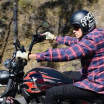A Monash University Accident Research Centre study, commissioned by 13 state and federal road agencies and automobile clubs, has confirmed stability control's effectiveness in local conditions.
It found a reduction in the risk of single-vehicle crashes of 25 per cent for ESC-equipped cars, 51 per cent in sports utility vehicles and 28 per cent across all vehicle types.
In single-vehicle crashes where the driver was injured, there were even bigger reductions; 28 per cent for cars, 66 per cent in SUVs and 30 per cent across all vehicles.
The RACQ has urged consumers to insist that ESC is fitted to any new vehicle they purchase, particularly four-wheel-drives.
RACQ executive manager of vehicle technologies Steve Spalding said ESC currently was being fitted to only 40 per cent of new vehicles in Australia.
Often it is an extra-cost option, but some new releases, such as the new Holden Ute and Toyota Camry range, have it fitted as standard across the range.
“This is life-saving technology and the safety specifications set for vehicles today will affect crash risk and injury outcomes for the next 20 years because that is how long these vehicles are likely to remain on the road,” Spalding said.
The study analysed crash patterns of 7700 ESC-equipped vehicles manufactured from 1997 to 2005 that were involved in crashes across Australia and New Zealand between 2001 and 2005.
These were compared with the crash patterns of about 203,000 vehicles without ESC during the same period.
Previous international studies have shown ESC effective in preventing single-vehicle crashes.
In Queensland, single-vehicle crashes accounted for 49.5 per cent of driver fatalities in 2006.
The US has made ESC mandatory for the 2012 model year, while the US National Highway Traffic Safety Administration has labelled stability control the most significant development since the seat belt.
Commonly referred to as ESC, but also with a number of different trade names, electronic stability control works to avoid the loss of control in an emergency.
It anticipates a skid with a set of sensors, which then engages the brakes at one or more wheels individually and employs the anti-lock system to restore stability.
In 2006, 43 per cent of all newly registered cars in Europe were fitted with stability control.
Bosch, a maker of ESC systems, said stability control was largely standard equipment among mid-size and luxury vehicles from Europe.





.jpg)
.jpg)
.jpg)

_0.jpg)



.jpg)
 (1).jpg)



.jpg)










